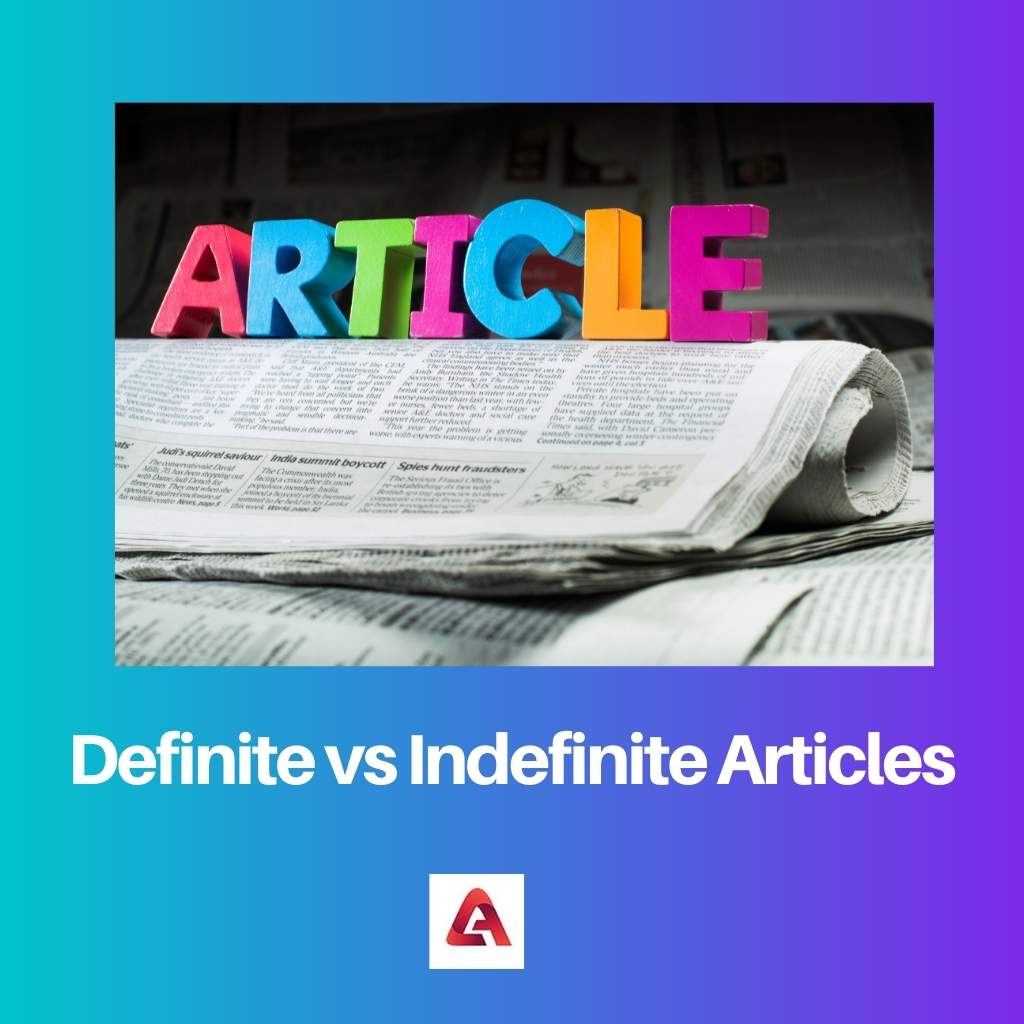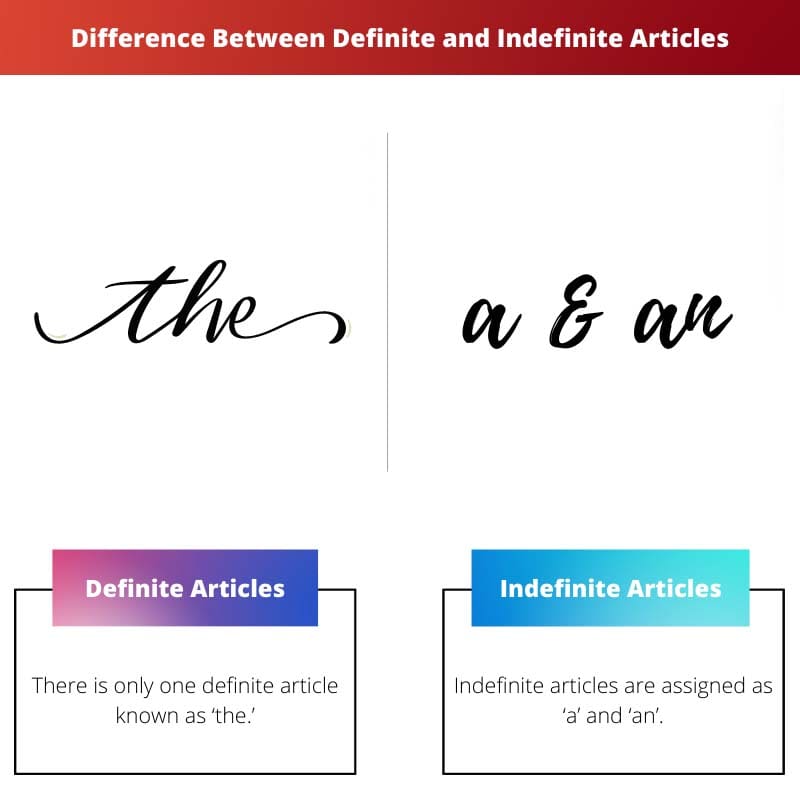Articles are one of the most common word groups in the English language, and yet they can be tricky to master. One of the most common things that students find confusing about English is the use of the article a/an and the.
But there is a simple rule to follow. Articles are used in front of nouns known to the writer, while indefinite ones are used in front of general unknown ones.
Key Takeaways
- Definite articles refer to specific nouns, while indefinite articles indicate general nouns.
- English has one definite article, “the,” and two indefinite articles, “a” and “an.”
- Use “the” for specific items and “a” or “an” for unspecific items or first-time introductions.
Definite vs Indefinite Articles
A definite article is a word that is added in front of a common noun or a proper noun to make it specific and clarify the sentence structure. They include ‘the,’ ‘a,’ and ‘an.’ Indefinite article is a word that is used in front of something that does not have a specific name, and they include ‘a’ and ‘an.’

In English, the definite article is used in front of a noun to make it specific. The definite article can be used in front of a proper noun or a common noun.
Proper use of definite articles will clarify sentence structures. A definite article is ‘the’ or ‘a(n).’ They are used with singular nouns that are specific.
The indefinite article is a word that is introduced in the English language in primary school. A word is called indefinite when it is used to speak of something that does not have a specific name, such as “a book,” “a house,” or “a method.” “A” and “an” are indefinite articles used to specify a noun before a vowel sound.
“An” is used before a word that begins with a consonant sound.
Comparison Table
| Parameters of Comparison | Definite Articles | Indefinite Articles |
|---|---|---|
| What are they? | There is only one definite article known as ‘the.’ | Indefinite articles are assigned as ‘a’ and ‘an’. |
| Used Before | Definite articles are only used in front of definite nouns. | Indefinite articles are used before all nouns but not definite nouns. |
| Type of Noun | Definite articles can be used only if the proceeding noun is already known. | The noun proceeding an indefinite article need not be known to the writer. |
| Singular /Plural Noun | Definite articles can be used before both singular and plural nouns. | Indefinite articles are used only before singular nouns. |
| Specificity | Definite articles are very specific. | Indefinite articles are not very specific. |
What are Definite Articles?
A definite article is a word and it is used before a particular noun but not before a general noun. The word the is assigned as a definite article in the knowledge of the English language.
The definite article shows that the speaker is marking a specific person or thing. This definite article, “the,” is used before words that are both singular and plural.
A definite article is, as a rule, used when you are referring to something specific or something previously introduced. For example, if you are saying something like, “This is an article about definite articles,” then you are using a definite article because you are referring to a specific article.
Another example would be, “I want a beer because I am thirsty.” In this example, you are referring to a specific beer because you are thirsty.
A definite article is a word used to dedicate a person or thing to a clear identity to the listener or reader. It helps identify an object or a person. In a sentence, it can be a stand-alone word or a prefix.
An example is, “The dog followed the cat down the street.” In this example, “the” replaces a noun that is not known. If the listener or reader is unfamiliar with the word “dog,” then it can help describe the identity of the dog.
In another example, “The” can also be a prefix to a word. In this example, “The” is a prefix to the verb “walked,” meaning the person walked in a clear and distinct way. The definite article can be used in other languages and is very useful in the English language.
What are Indefinite Articles?
An indefinite article is used with uncountable general nouns. You can use any or some with them. One is used when only one is present. Some are used when there is no number specified in the question.
A/an is used when there is no specific noun specified in the question. A lot of is used when there is no plural noun specified in the question. A few are used when there is no plural noun specified in the question.
You may use “some,” “any,” or an indefinite article. An indefinite article is used when the noun that you referring to is not specifically known or previously introduced by you.
For example, if you are saying something like “I am thirsty,” then you are using an indefinite article because you are not referring to a specific beer.
Another example would be, “I think that book is interesting.” In this example, the noun is not specific to you. In English, indefinite articles are used to talk about people or things that are not specific.
However, indefinite articles do not replace the noun. An indefinite article is “a” for singular nouns, “an” for singular nouns that begin with a consonant sound, and “some” for plural nouns. Thus for using an indefinite article, the following must be kept in mind.
Main Differences Between Definite and Indefinite Articles
- Definite articles are fewer. There is only one definite article, but there are more indefinite articles.
- Definite articles are used more rarely than indefinite articles.
- Definite articles are used before both countable and non-countable nouns in similar rules, while indefinite articles should be used only before uncountable nouns as a rule.
- Definite articles are used before singular and plural nouns alike, while indefinite articles are ideally used only before singular nouns or nouns alike.
- Definite articles proceed only with known nouns to the speaker or writer, whereas indefinite nouns proceed with any noun in general. Once the mountains have been introduced using an indefinite article, it is then referred to with a definite article.

- https://www.jstor.org/stable/339955
- https://books.google.com/books?hl=en&lr=&id=1QSxAgAAQBAJ&oi=fnd&pg=PA81&dq=definite+article&ots=hHpYxQJzIy&sig=aLeSGybYrcYLjoYfz6gR2SgAMXo

Proper explanation of definite versus indefinite articles. This article is quite enlightening.
This article sheds light on the key differences quite well.
I could not agree more. The article was very informative.
A very well-written article. It provides clarity on the subject.
The article was informative and I appreciate how it was broken down into proper key takeaways.
It was very well-organized and easy to follow. Very informative.
The article was not satisfactory. It did not take the proper approach to explaining the nuances between definite and indefinite articles.
I found it quite helpful. It answered many of my questions.
The article was very thorough and informative. It provided good examples to illustrate the points.
I found the examples used quite helpful in understanding the concepts.
I liked the fact that it included the comparison table. It provided a clear overview.
It is proper to point out the difference between definite and indefinite articles. I am confused with this. This was very enlightening.
Yes, this is a source of confusion for students. This article explains it very well.
The article is very informative. The comparison table helped illustrate the differences clearly.
This article failed to adequately explain the difference between the two article types. It is a common point of confusion, hopefully, they can do better next time.
I must agree with the former comment. I found the article very helpful.
I disagree. I found the comparison table very helpful.